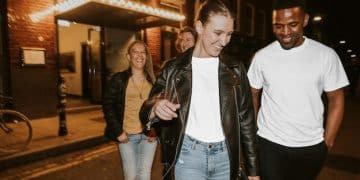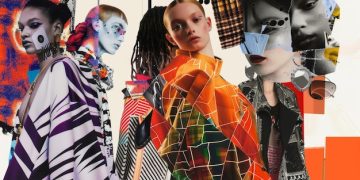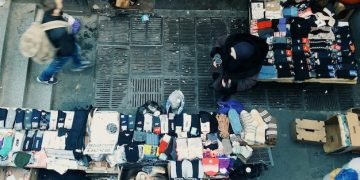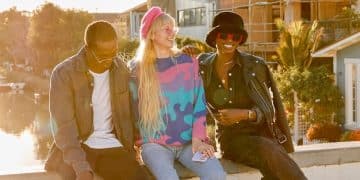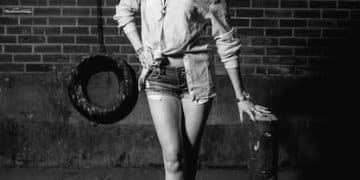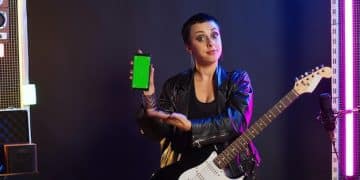Underground Fashion & Music: How Artists Shape Style Trends
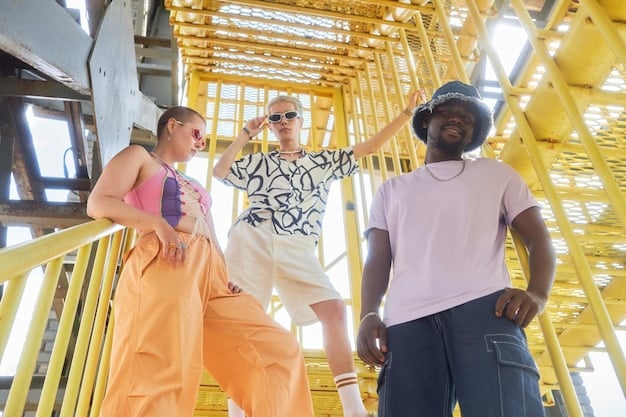
The underground fashion scene is deeply intertwined with music, where artists act as key influencers, dictating trends and fostering unique style expressions.
The underground fashion’s music scene connection: how artists influence style is undeniable. Emerging from the fringes of society, these movements blend rebellious self-expression with distinct aesthetic visions, setting trends that often ripple into mainstream culture.
The Symbiotic Relationship Between Music and Fashion
The link between music and fashion goes way back, but in underground scenes, it’s something else. These aren’t just partnerships; they’re inseparable. It’s where fashion and music meet, creating spaces for self-expression.
Underground fashion and music scenes are very important because they are constantly pushing creative boundaries. People in these groups use clothing and music to challenge norms and express their identities. These moments of creativity can reach mainstream audiences and have a cultural impact.
Music as a Fashion Catalyst
Music profoundly impacts fashion by setting trends and sparking unique styles. Music subcultures often have specific aesthetics that followers embrace.
- Punk Rock: The ripped clothing, leather jackets, and safety pins of the punk scene mirror the genre’s rebellious and anti-establishment spirit.
- Hip Hop: Hip hop’s influence is noted in streetwear, with oversized clothing, sneakers, and flashy jewelry becoming synonymous with the culture.
- Gothic Subculture: The dark aesthetics of the goth scene, characterized by black clothing, dramatic makeup, and Victorian-inspired attire, reflect the music’s melancholic themes.
Ultimately, music provides a way for people to explore, define, and express themselves through clothes, creating new trends.
In conclusion, music and fashion are intertwined in underground scenes, fostering creativity and self-expression through clothing and styles.
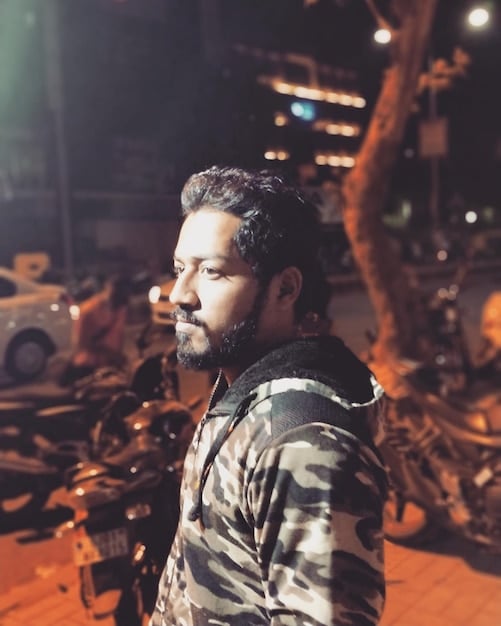
Defining Underground Fashion
Underground fashion is more than what you see in stores; it goes against mainstream styles. It reflects individuality, creativity, and defiance, making it its own thing.
This type of fashion is often rooted in movements that value self-expression and push boundaries. It’s not just about clothing, it’s a form of resistance.
Key Characteristics of Underground Fashion
Underground fashion stands apart due to its unique attributes. Exploring the nature of underground fashion highlights what makes it important in culture.
- DIY Ethos: A strong emphasis on do-it-yourself or repurposed items, highlighting a rejection of mass-produced fashion.
- Individuality: A focus on personal expression over brand names, fostering unique and non-conforming styles.
- Subcultural Influence: Draws significant inspiration from various subcultures, including music genres, art movements, and social groups.
With its creativity, underground fashion is a way for people to express themselves apart from the mainstream.
To conclude, underground fashion is all about defying norms and embracing creativity. It’s a visual declaration of independence and identity.
The Evolution of Style Through Subcultures
Subcultures change how people see fashion, each with its unique style and ideas. These cultures evolve and transform how fashion is approached.
Exploring subcultures helps to see how distinct their style is and how it impacts fashion more broadly.
Influence of Punk, Goth, and Rave Scenes
Punk, Goth, and Rave scenes have notably transformed fashion by developing original aesthetics and styles that continue to impact trends.
- Punk: It is known for ripped clothing, safety pins, and DIY fashion, representing defiance.
- Goth: It highlights dark aesthetics, including black clothing and dramatic makeup, focusing on gothic moods.
- Rave: It emphasizes bright neon colors and futuristic designs, embracing rave culture.
These subcultures have impacted fashion by pushing innovation and encouraging individuality.
In essence, subcultures change how fashion is approached by encouraging creativity and self-expression.
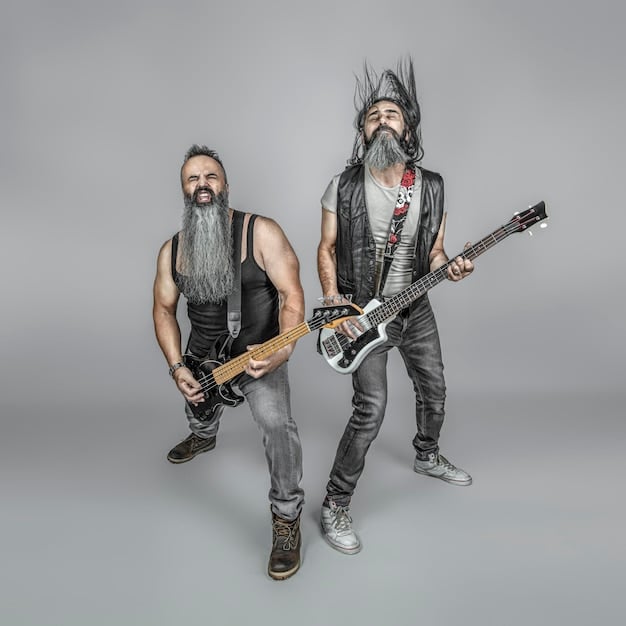
How Artists as Trendsetters Inspire Fashion
Artists set trends and inspire fashion by expressing themselves through what they wear. They capture fans’ attention and impact fashion trends. Artists’ styles influence not only what people wear but also how they express themselves through clothing.
Understanding how artists set trends is important for understanding fashion’s dynamic nature.
Stage Presence and Fashion Statements
Stage presence and fashion statements define how artists influence trends. What artists wear on stage can spark large trends and become fashion statements.
Exploring live performances helps to see the impact artists have on fashion and how they influence their audience’s choices.
Artists’ stage outfits usually mirror their music’s and persona’s themes, improving their act’s storytelling and connecting with fans. What an artist wears on stage can be very influential, establishing trends.
Stage outfits can inspire fans to emulate looks, affecting not only fashion choices but also personal expression as well.
In conclusion, stage presence and fashion choices are basic to how artists inspire fashion and set trends.
The Role of Social Media in Spreading Trends
Social media is important for expanding fashion trends, connecting designers, artists, and followers. Platforms like Instagram and TikTok allow trends to spread fast, impacting fashion worldwide.
Social media is a center for fashion, enabling everyone to show their style and affect trends.
The Power of Influencers and Digital Platforms
Influencers and digital platforms affect how fashion trends spread, making it easier for individuals to find and follow new styles.
- Trend Amplification: Social media boosts an artist’s fashion, making it easier to share and follow.
- Direct Engagement: Platforms facilitate direct communication between artists and fans, making fashion more accessible.
- Global Reach: Digital tools extend the impact of fashion to all parts of the world, going beyond geographical barriers.
To sum up, social media plays an essential role in impacting fashion trends, acting as both a tool and a center for creativity.
The Commercialization of Underground Styles
Underground styles becoming commercial involves big brands embracing these aesthetics, frequently bringing them into mainstream fashion but sacrificing their original spirit.
The commercialization of underground styles can lessen their authenticity, underscoring the dilemma between being genuine and appealing to a larger audience.
Balancing Authenticity and Marketability
Balancing authenticity with commercial appeal is a challenge for underground fashion as it can threaten its creative and rebellious spirit.
Balancing creativity and market needs is important for securing both the financial stability and aesthetic integrity of underground fashion.
Retaining the features that make underground fashion special, even as it gets integrated into mainstream markets, is critical. Strategies that allow designers to cooperate with brands while keeping their individual style helps.
Balancing the unique aspects of underground fashion with market needs may help secure its ongoing importance and creativity.
| Key Point | Brief Description |
|---|---|
| 🎵 Music’s Influence | Music genres shape fashion trends in underground scenes. |
| 🎨 DIY Ethos | Underground fashion prioritizes do-it-yourself and repurposed clothing. |
| 📱 Social Media | Platforms like Instagram and TikTok spread trends quickly. |
| ✨ Artist Influence | Artists spark trends with stage outfits and personal styles. |
FAQ
▼
Music genres become the core of underground fashion. Punk rock creates ripped clothes, while goth influences dark trends. Hip-hop introduces streetwear impacting how music changes fashion.
▼
DIY becomes an important part of underground fashion. People use their resourcefulness to create customized pieces. By repurposing and creating your clothing you are expressing your identity.
▼
Platforms like Instagram and TikTok have accelerated trend broadcasting. Artists connect with followers through posts, making social media essential in the distribution of trends in the underground.
▼
Underground fashion highlights individuality and rejecting mass-produced items. Instead, it takes subcultural influences from movements, developing a creative independence from popular norms.
▼
Underground styles have problems protecting their creative independence when brands commercialize them. To prevent sacrificing artistic vision, balancing originality and market requirements becomes crucial.
Conclusion
In conclusion, underground fashion’s music scene connection: how artists influence style, showing how music and subcultures affect fashion trends. Underground fashion goes against mainstream styles, reflecting originality and creativity. Digital platforms and social media expands the reach of trends. Even with industry changes, protecting originality continues to be very important for underground fashion.
